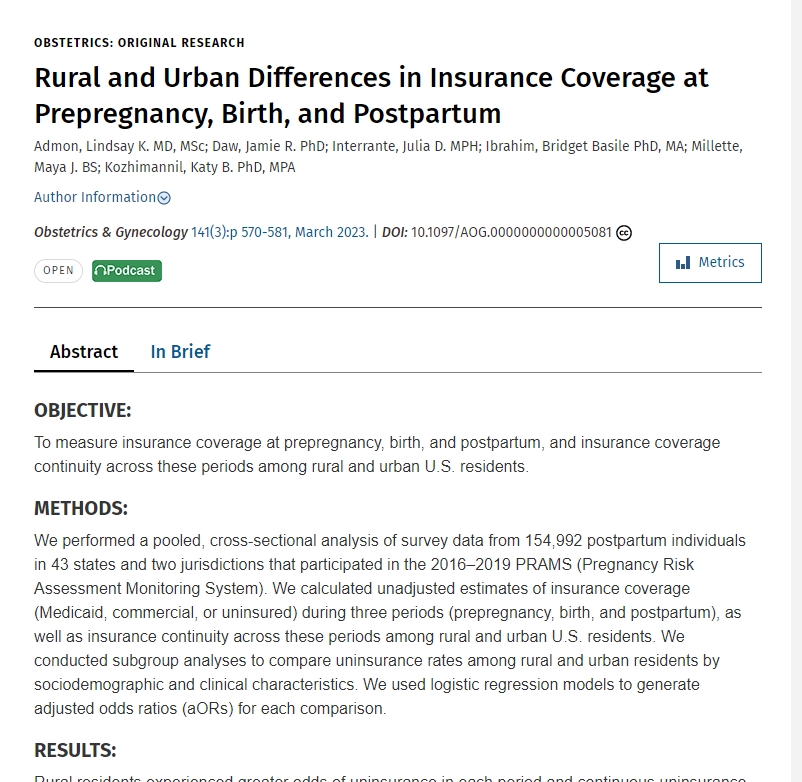Using 2016-2019 PRAMS data for 154,992 postpartum individuals (rural residents =
32,178; urban residents = 122,744), this study found that rural residents had higher
odds of being uninsured than urban ones. Respondents were asked about coverage
during and before pregnancy too, allowing authors to determine that rural coverage
was lower for each period—pre-pregnancy, birth, and postpartum—as well as for
continuous uninsurance across all periods. Rural residents who were non-Hispanic
white, married, and had planned pregnancies had higher odds of uninsurance in all three
periods than their urban peers. Within rural areas, Hispanic and Indigenous residents
were more likely to be uninsured (excluding Indian Health Service care) during the prepregnancy
and birth periods. Policy to expand insurance coverage for rural residents
could improve parental mortality and morbidity in those regions.

